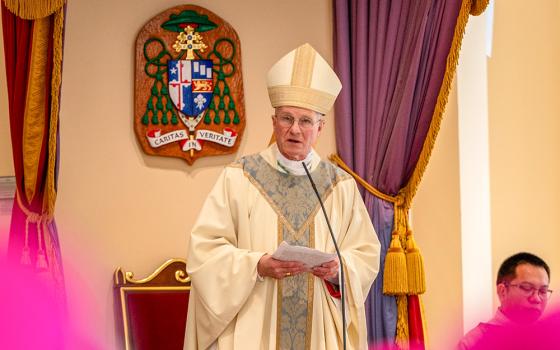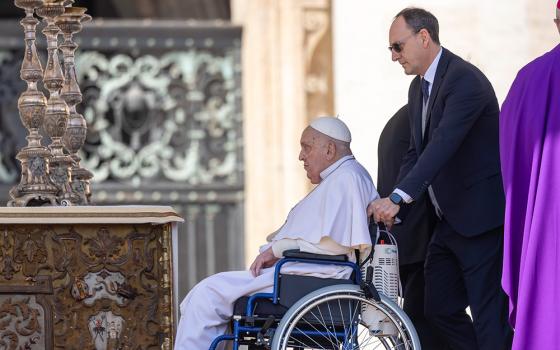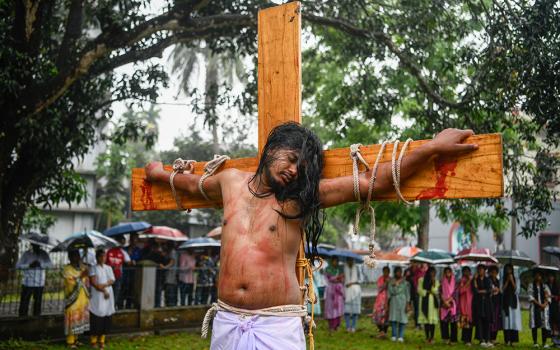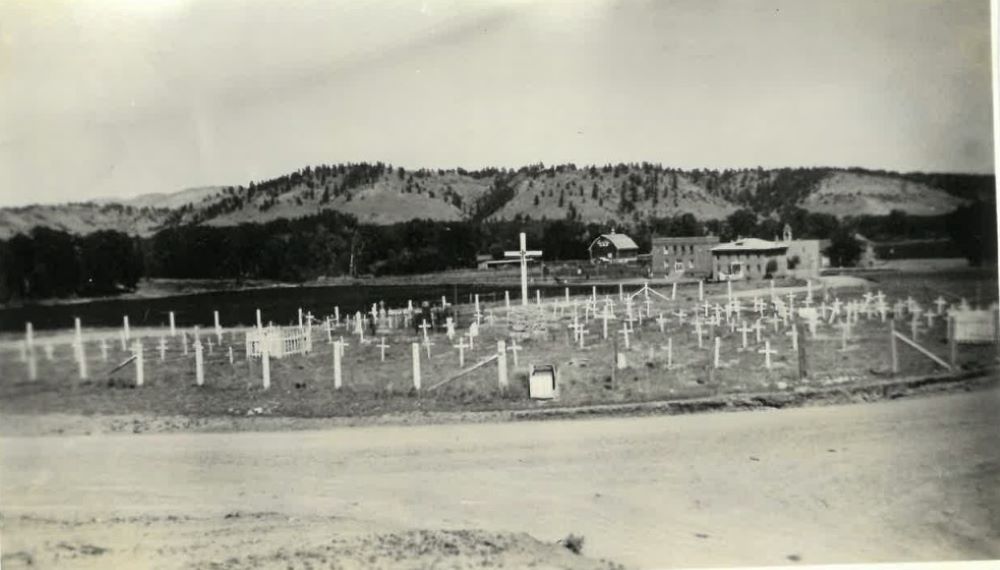
St. Labre Cemetery is pictured around 1930. A 16-month investigation found no evidence of unmarked graves but determined at least 113 students died while enrolled at the St. Labre boarding schools in Montana. (Courtesy of St. Labre Indian School Archives)
Editor’s note: In 2021, Tk'emlúps te Secwépemc First Nation said it found the remains of around 200 children on the grounds of the former Kamloops Indian Residential School in Canada. It later clarified its findings indicated the likely presence of more than 200 unmarked graves. This story has been updated to reflect that clarification. This story has also been updated with information from the federal boarding school report released July 30, 2024.
After the discovery in 2021 of suspected unmarked graves at a former residential school in Canada, leadership at a Catholic boarding school for Native youths in southeastern Montana wondered whether unmarked graves might exist on its properties serving the Crow and Northern Cheyenne reservations.
The resulting 16-month investigation — one of the first of its kind launched by a Catholic entity — found no indications of undocumented graves or deaths on school grounds. But the 149-page report, shared with NCR July 25, reveals that between 1884 and 1960 at least 113 students died while enrolled in institutions operated by the St. Labre Indian School Educational Association.
Combined with a federal report on boarding schools released July 30, it brings the total number of documented Indigenous student deaths during the boarding school period to nearly 1,100.
Disease and illness caused 90% of student deaths, according to the Montana report, with 10 deaths from other causes, including accidents. The large percentage roughly parallels overall estimates in the Americas as disease decimated Indigenous populations following European colonization.
Overcrowding, poor sanitation practices, enrolling and keeping sick students in school, and unreliable access to medical care contributed to student deaths at St. Labre schools, the report says.
Sarah Standing Elk, age 4, "daughter of Eugene Standing Elk," died March 6, 1898, reads one entry. Buried in the St. Labre Mission Cemetery, she was "identified as 'Little Sarah.' "
'The historical record is replete with instances of the schools calling on Indian police to bring in students, track down runaways, or to prevent children from leaving with their parents.'
—St. Labre boarding school report
The report states it is likely "many other students died," yet their deaths were not documented in the archival material obtained and reviewed during the investigation. It also notes it's unlikely that death caused by abuse or neglect would be recorded as such in the historical records.
Walter Fleming, a member of the Kickapoo Tribe of Kansas who grew up on the Northern Cheyenne Indian Reservation in Montana and now heads the Department of Native American Studies at Montana State University-Bozeman, was one of four Indigenous individuals on a five-person investigation commission appointed by the St. Labre board of directors. The commission elicited the help of a historical research firm.
"I was prepared for the worst," Fleming told NCR. He said it is comforting the commission found no evidence of undocumented deaths or graves, though he thinks there's a possibility that more sophisticated technology in the future could "still uncover ones presently unknown."
The three St. Labre schools, founded between 1884 and 1891 and run by various religious orders, still operate today. They are: St. Labre Indian School, a pre-K through 12th grade school in Ashland; Pretty Eagle Catholic Academy (formerly St. Xavier Mission School), a pre-K through eighth grade school in St. Xavier; and St. Charles Mission School in Pryor.
St. Labre additionally operates a preschool and provides and supports community programs for local reservations.
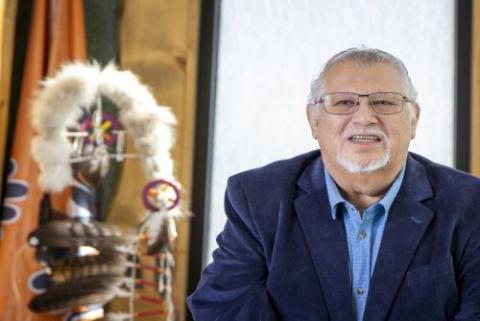
Walter Fleming is a member of the Kickapoo Tribe of Kansas who grew up on the Northern Cheyenne reservation in Montana. He was one of four Indigenous individuals on the commission. (Courtesy of Walter Fleming)
The commission held 12 listening sessions, which suggested locations of unmarked graves — such as "near a tree by the river in Ashland" — and archival research and a survey using laser scanning technology called lidar (light detection and ranging) were used to seek any possible graves.
Though the investigation found no undocumented deaths or burial grounds, it located in archival records the names, ages and circumstances of many children who died, and compiled and published that information in the report.
Bringing the names to light is "worth the whole enterprise for their families," said Patrick Hayes, an archivist for the Redemptorist order who has assisted with the U.S. Catholic Indigenous Boarding Schools Accountability and Healing Project.
Unlike boarding schools far from reservations and Native communities, such as Kamloops in Canada and the well-known Carlisle Indian Industrial School in Pennsylvania, where Indigenous children were transported hundreds of miles from their families, St. Labre schools were close to local tribes. Archival research showed that in nearly all cases, seriously ill children were sent home and died there.
The U.S. government ran some of the estimated 500 boarding schools for Native children, while Catholic entities, at times with federal funding, operated 87, according to the Catholic accountability and healing project. St. Labre received federal funding for about a decade.
Publishing the first comprehensive list of Catholic-run boarding schools, the healing project provided information not documented in an initial report on boarding schools the U.S. Department of the Interior released in 2022.
A second and final report was shared this summer by the Interior Department and indicated at least 973 children died while attending a federal Indian boarding school. It lists just one student death for St. Labre.
The federal figure includes death for any reason, based on federal records, while a child was enrolled at a federal Indian boarding school, Joshua Barnett, spokesperson for the U.S. Bureau of Indian Affairs, told NCR in an email.
For the St. Labre investigation, the commission looked at federal records as well as others on file at various locations, including the schools, local parishes and religious communities.
Bishop Jeffrey Fleming (no relation to Walter Fleming) of the Diocese of Great Falls-Billings, Montana, said in a statement following the release of the St. Labre report that many people have told him Catholic schools in the region were or are "sources of pain and division as opposed to a source of joy and unity in Christ."
"Through the report of this commission, we are given a clear view of the history of the Catholic schools of the St. Labre system," said Fleming. "I draw close to all people of the Crow and Northern Cheyenne Nations, and I am eager to journey toward reconciliation and healing."
The commission and board members are planning a fall prayer service and a remembrance for those who died, Curtis Yarlott, executive director of St. Labre Indian School, told NCR.
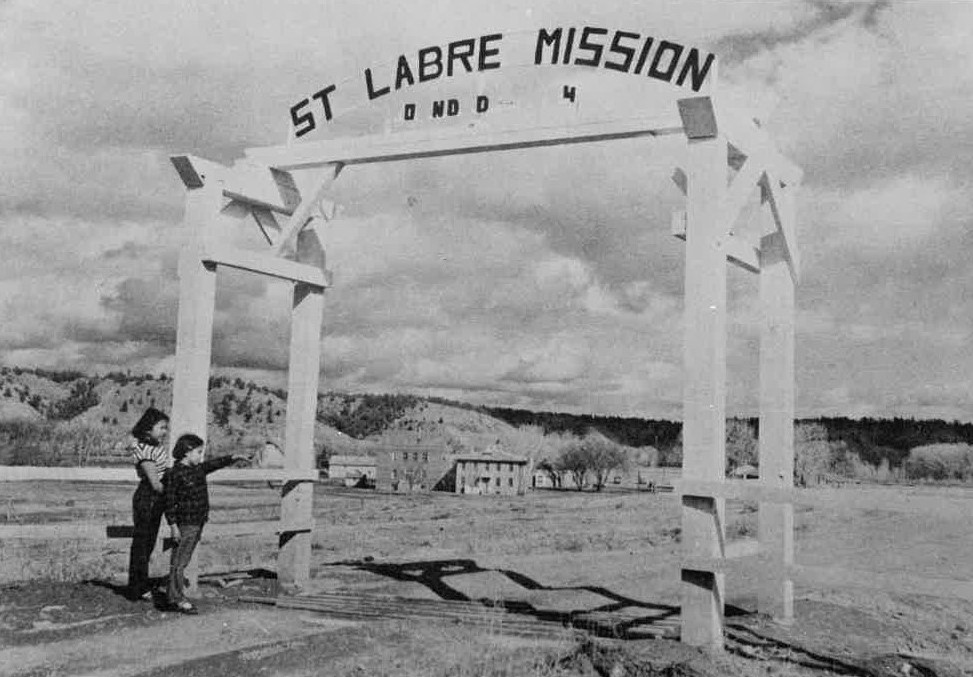
St. Labre Mission's entrance gate partially frames the school building in the 1930s. The three St. Labre schools, founded between 1884 and 1891 and run by various religious orders, still operate today. (Courtesy of St. Labre Museum and Archives)
Stories of harsh and possibly abusive punishments, as well as accounts of retribution inflicted upon families who resisted sending their children to the boarding schools, emerged during the investigation.
School funding at the schools directly correlated with student enrollment, says the report, and "the historical record is replete with instances of the schools calling on Indian police to bring in students, track down runaways, or to prevent children from leaving with their parents."
The report documents an instance when police, after failing to find school-age children for the school, attempted to bring in a 2-year-old boy, "but the parents objected … so they let him go."
The report says the number of religious orders associated with St. Labre schools was an "unexpected" finding. It included not only Capuchins, Ursulines, Jesuits and diocesan priests but Edmundites and School Sisters of St. Francis.
Hayes noted, however, that these orders already were listed on the Catholic truth and healing website. He said the investigation could have acquired a more reliable or historically accurate set of dates for the presence of religious orders or the beginnings of the missions/schools if it had consulted the website list.
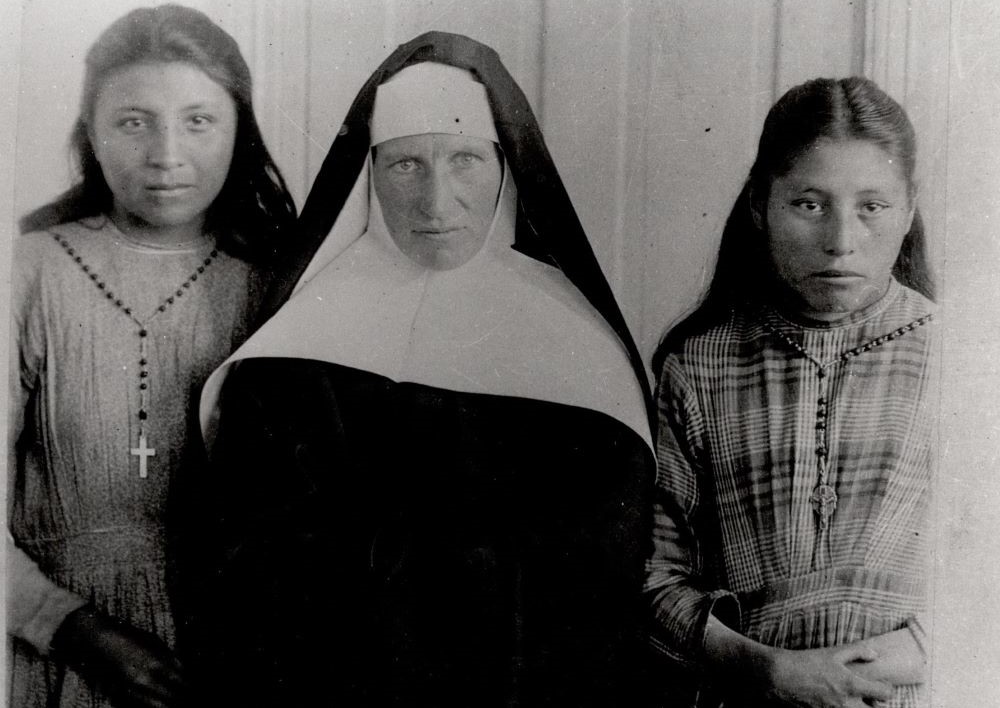
Sister Rose is pictured with Ursula Dancing Woman Martinez and Rose Charges Strong at St. Xavier Mission School in Montana in the 1890s. St. Xavier's Mother Magdalen, cited in the St. Labre report, wrote that the Native children "are taken away from their lodges and brought to school where they will lose the Indian Mythology and foolish traditions." (Courtesy of St. Labre Indian School/Little Big Horn College Archives)
School leaders at Maȟpíya Lúta, formerly called Red Cloud Indian School and before that Holy Rosary Mission, a former Jesuit-run boarding school in Pine Ridge, South Dakota, undertook a similar investigation into the possibility of unmarked graves on school grounds following a credible allegation.
The investigation ultimately found "no evidence of unmarked graves," said Maka Black Elk, a citizen of the Oglala Lakota Nation and former executive director for truth and healing at Maȟpíya Lúta.
In addition to the two boarding schools, Catholic dioceses in Oklahoma launched a boarding schools project this year to document the history of Catholic boarding schools in the state, which had the most such schools in the country — 14, according to the Catholic accountability and healing project list.
These undertakings by the Catholic Church come as the church and the government in Canada and more recently in the United States are reckoning with their legacy of schools for Indigenous children.
Two years ago, Pope Francis visited Canada to offer a historic apology for the church's "catastrophic" role in the country's residential school system, and last month the U.S. bishops offered an apology for the church's mistreatment of Native people. Both apologies were welcomed by some former survivors and described as exceedingly inadequate by others.
In Montana, some attendees in listening sessions expressed skepticism that the investigation would be credible because they felt the "board was investigating itself," according to the report. Fleming, says the report, explained to participants "the Commission was independent, and that the majority of Commission members were not connected with the Board of Directors." Two members serve on the board.
Fleming told NCR he viewed the listening sessions as cathartic for many participants, as it was an opportunity for their stories, some positive, others painful, to be acknowledged and recorded. (Social workers were present at the sessions and available to support participants.)
At one listening session an attendee said that on her grandmother's first day at school, her braids were cut off and thrown in the trash.
"That night she went back to the trash and retrieved her braid, then took it home to her grandfather on the weekend," says the report. "He wrapped it and tied the braid in raw hide and put it in a tree, out of respect."
Both Maȟpíya Lúta and St. Labre, said Black Elk, "to me demonstrate a willingness of the church to engage in truth telling."
"We have to continue to seek that truth," he said, "no matter the outcome."
Advertisement

